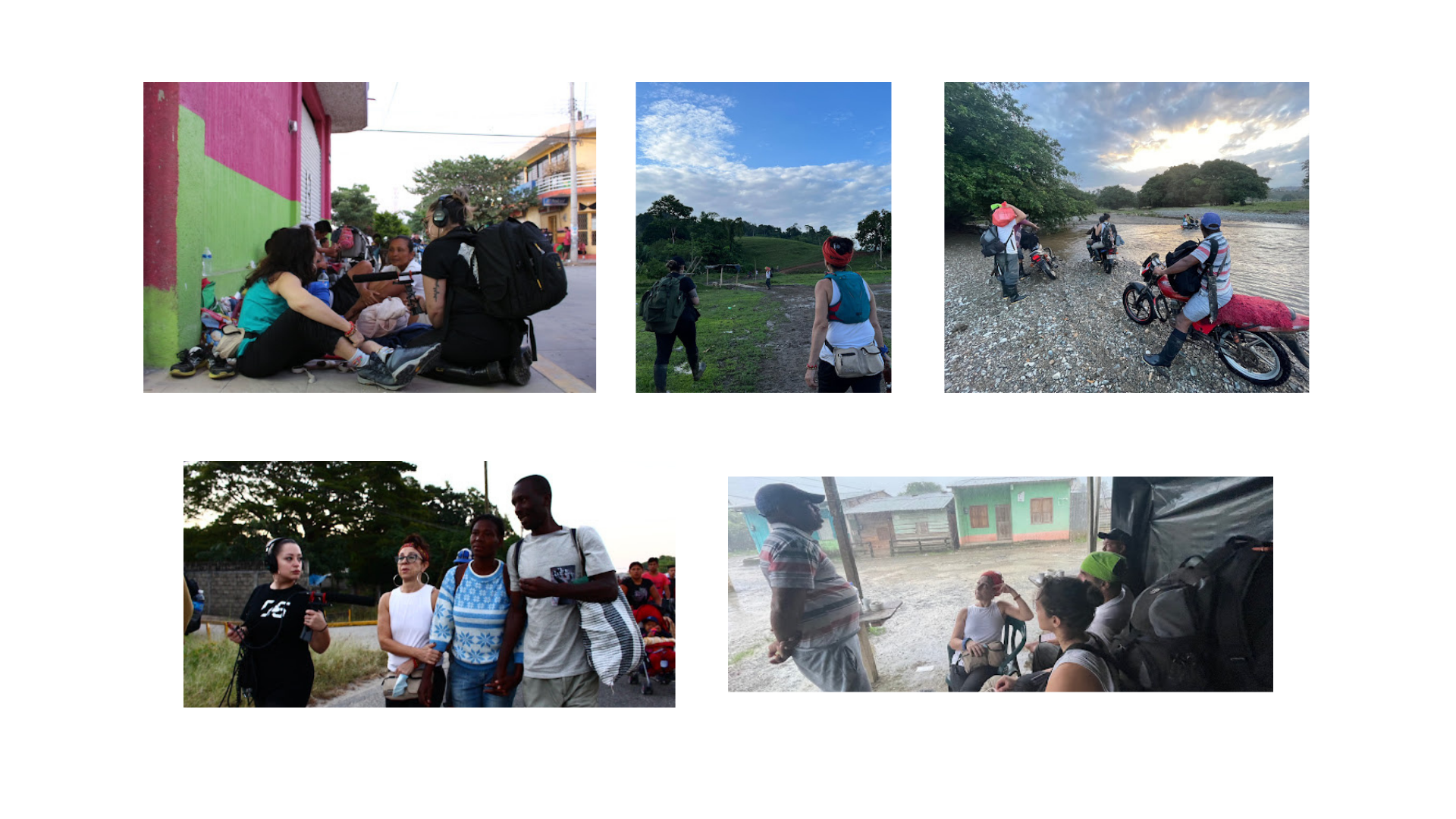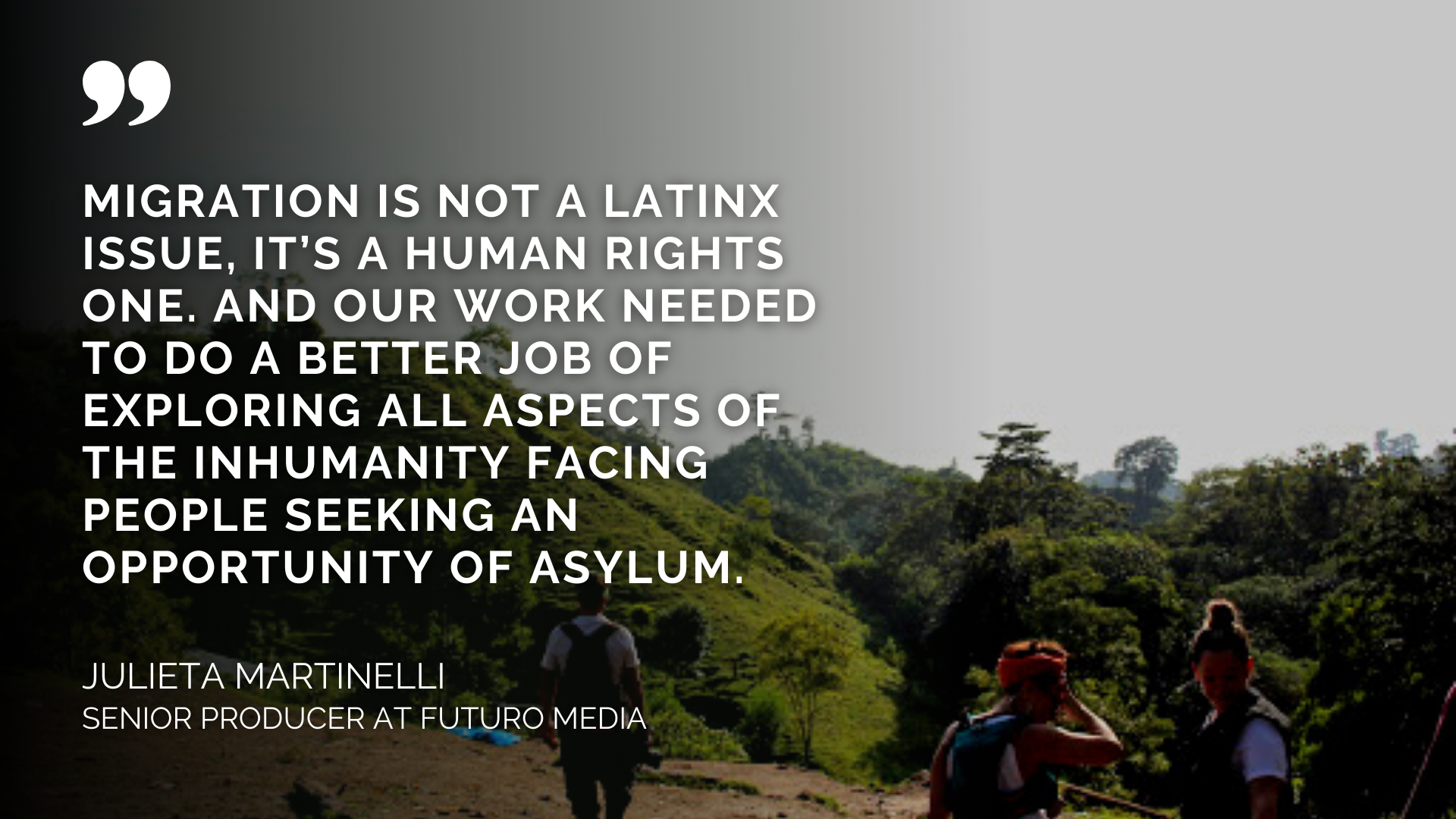NPR and Latino USA’s New Series ‘The Network’ Traces a Global Movement Transforming Abortion Access
May 29, 2025 /
Senior Producer Julieta Martinelli’s reflections on reporting for Latino USA’s “The Moving Border: Even Further South”

Four years ago in November, I traveled to Baja California, Mexico, alone. I was frustrated by the 24-hour news cycle, and an endless array of talking heads who used words like “surge” and “invasion” to stoke fear and hate as news of a “caravan” dominated the airwaves. South of Tijuana, I met up with several thousand mostly Central American asylum seekers and migrants heading north. We walked in the scorching heat to a camp in the outskirts of Tijuana where I spent several weeks. I met families, young men and women traveling alone, babies and toddlers. I wondered if one day they’d remember, if they’d understand. I did that back and forth for over a year.

In November of 2021, I found myself hearing the same words. Yet another “caravan,” more fear-mongering, more misunderstanding of what and why people move in this way, even after all these years—this goes back further than 2018.

Again, we went to Mexico. We knew two things: we wanted the third episode of “The Moving Border” series to focus on the changes —or lack of— after the first year of the Joe Biden presidency, who made lofty promises related to the treatment of asylum seekers and migrants, and this episode needed to delve into an issue we’d missed in our prior reporting, the particularly harsh conditions and the racism that Black asylum seekers experience, not just at the U.S. border, but throughout their journey there.

Migration is not a Latinx issue, it’s a human rights one, and our work needed to do a better job of exploring all aspects of the inhumanity facing people seeking an opportunity of asylum.

I wrote and reported the first two episodes of “The Moving Border” under a Trump presidency. At the time, we thought —maybe hoped— that the next installment might yield a ray of hope. I’m not sure that it does.

What I do know is that I still think of the people Maria Hinojosa and I met on the roads of Oaxaca, standing in line at the Cafetaleros stadium in Tapachula, the quiet anxiety permeating the air in the middle of the night at Las Tekas in Colombia, hours before people would walk into the Darién, communities of strangers bonded by a shared dream, and a shared need for safety. As President Biden hugs Ukrainian children, I can’t help but think of all the children we met on this trip, who are expelled, who sit at camps, who suffer alongside their parents. That’s what “The Moving Border” is about to me—calling out hypocrisy, sin miedo.
You can listen to “The Moving Border: Even Further South” here.
***
Julieta Martinelli is an award-winning investigative reporter and currently a senior producer at Futuro Media. She’s documented the human repercussions of changing legal policies along the U.S.-Mexico border, and covered the criminal justice system, policing, and immigration.